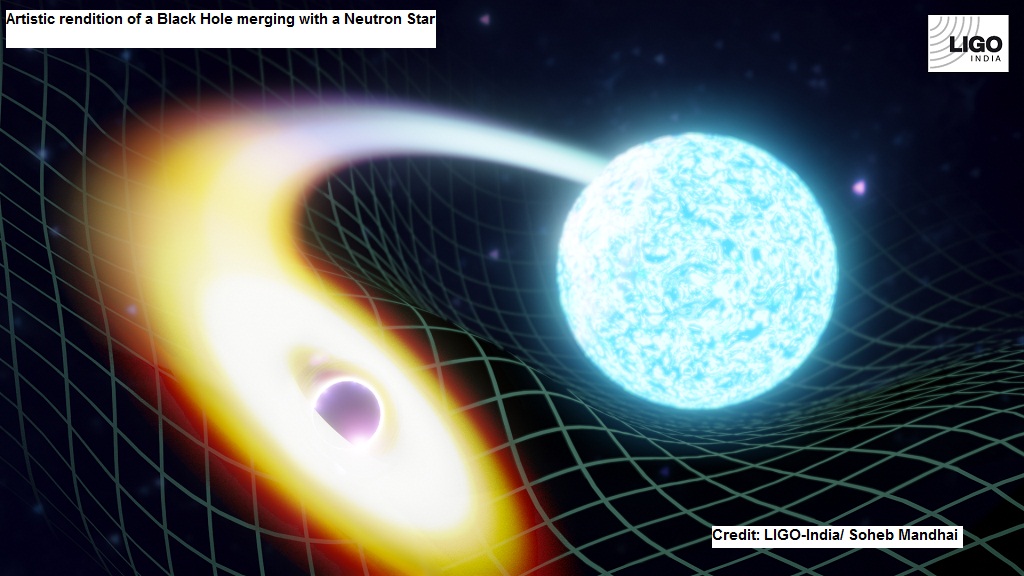LIGO’s Sensational Discovery: Collisions Between Neutron Stars And Black Holes

Pune, 29th June 2021: Researchers working on LIGO-Virgo network of detectors were able to discover the gravitational waves from a pair of ‘NSBH mergers’, collisions between a neutron star and a black hole for the first time. It was detected on January 5, 2020, while the second detection was made on January 15, 2020.
The first collision event nicknamed GW200105 was detected on 5th January 2020, by the LIGO-Livingston and Virgo observatories, while the second one, nicknamed GW200115, was detected on 15th January by three observatories: LIGO-Livingston, LIGO-Hanford and Virgo.
Indian researchers from the LIGO-India Scientific Collaboration (LISC) contributed to this major discovery. Shasvath Kapadia from the International Centre for Theoretical Sciences (ICTS) in Bengaluru helped with the estimation of the NS-BH merger rate, using a method he co-developed.
For these two new gravitational-wave events, detected in January 2020, scientists are highly confident that the lower mass component of each binary lies in the theoretical range expected for neutron stars.
How were the detections made?
“As the two compact and massive bodies orbit around each other they come closer, and finally merge, due to the energy lost in the form of gravitational waves. The amplitude of the waves that are currently detected by the LVC is one part in 10^21, and corresponds to a change to the path of the light within our detectors that is much smaller than even the size of the nucleus of an atom”, said the press statement.
“The GW signals are buried deep inside a lot of background noise. To search for the signals, scientists use a method called matched filtering. In matched filtering, various expected gravitational waveforms predicted by Einstein’s theory of relativity, are compared with the different chunks of data, to produce a quantity that signifies how well the signal in the data (if any) matches with any one of the waveforms. Whenever this match (in technical terms “signal-to-noise ratio” or SNR) is significant (larger than 8), an event is said to be detected. For GW200105, the SNR was about 11 and for GW200115 was close to 13.5. Observing an event in multiple detectors separated by thousands of kms, almost simultaneously, gives scientists increased confidence that the signal is of astrophysical origin, which is the case for both events”, it added.
What new Science did we learn?
“These observations help us understand the formation and relative abundance of such binaries. Neutron stars are the densest objects in the Universe, so these findings can also help us understand the behaviour of matter at extreme densities. Neutron stars are also the most precise “clocks” in the Universe, if they emit extremely periodic pulses. The discovery of pulsars going around Black Holes could help scientists probe effects under extreme gravity. We could also use NSBH binaries to learn about the acceleration of our universe – particularly in cases where an EM counterpart is also observed”, it informed.





